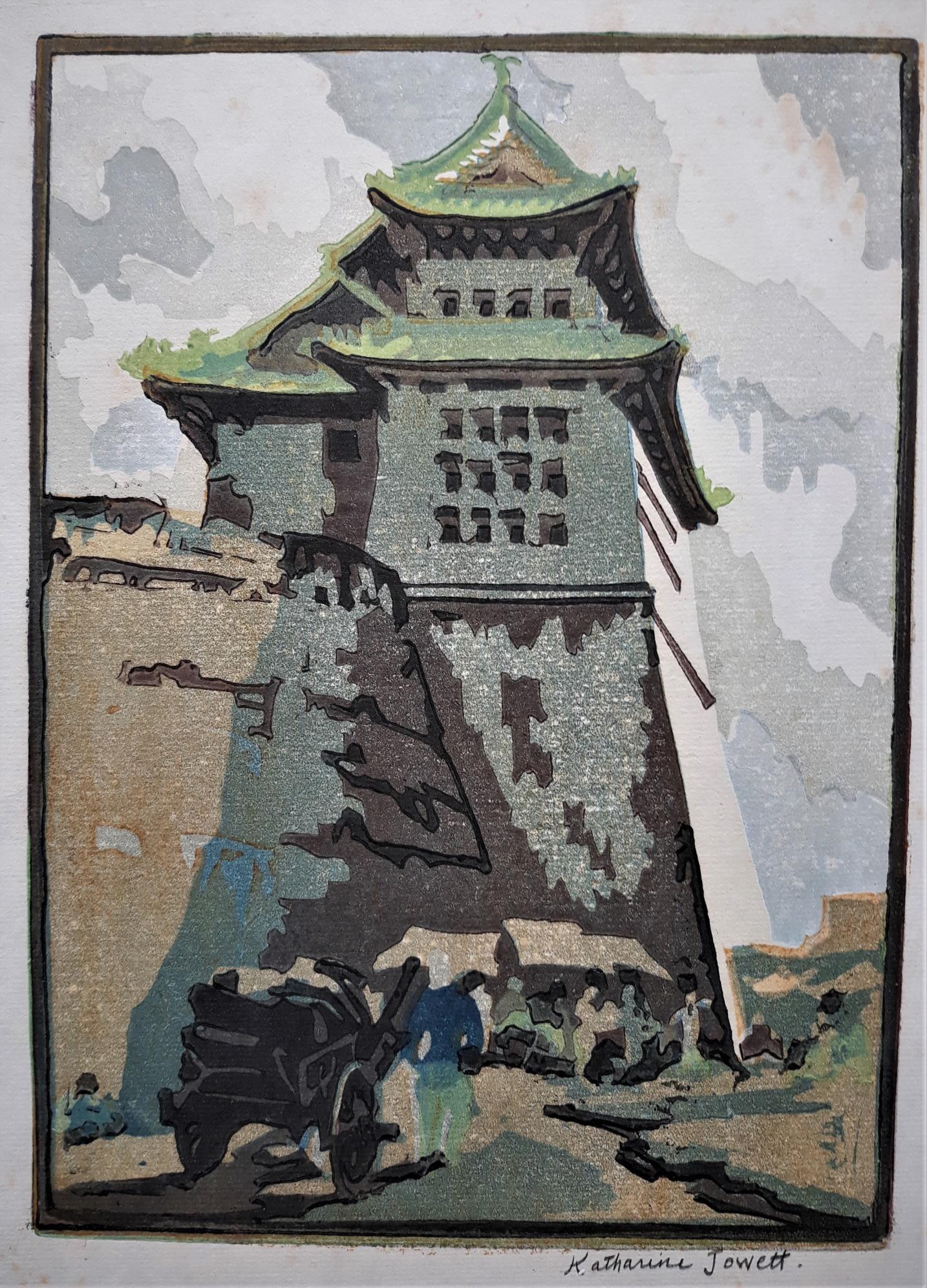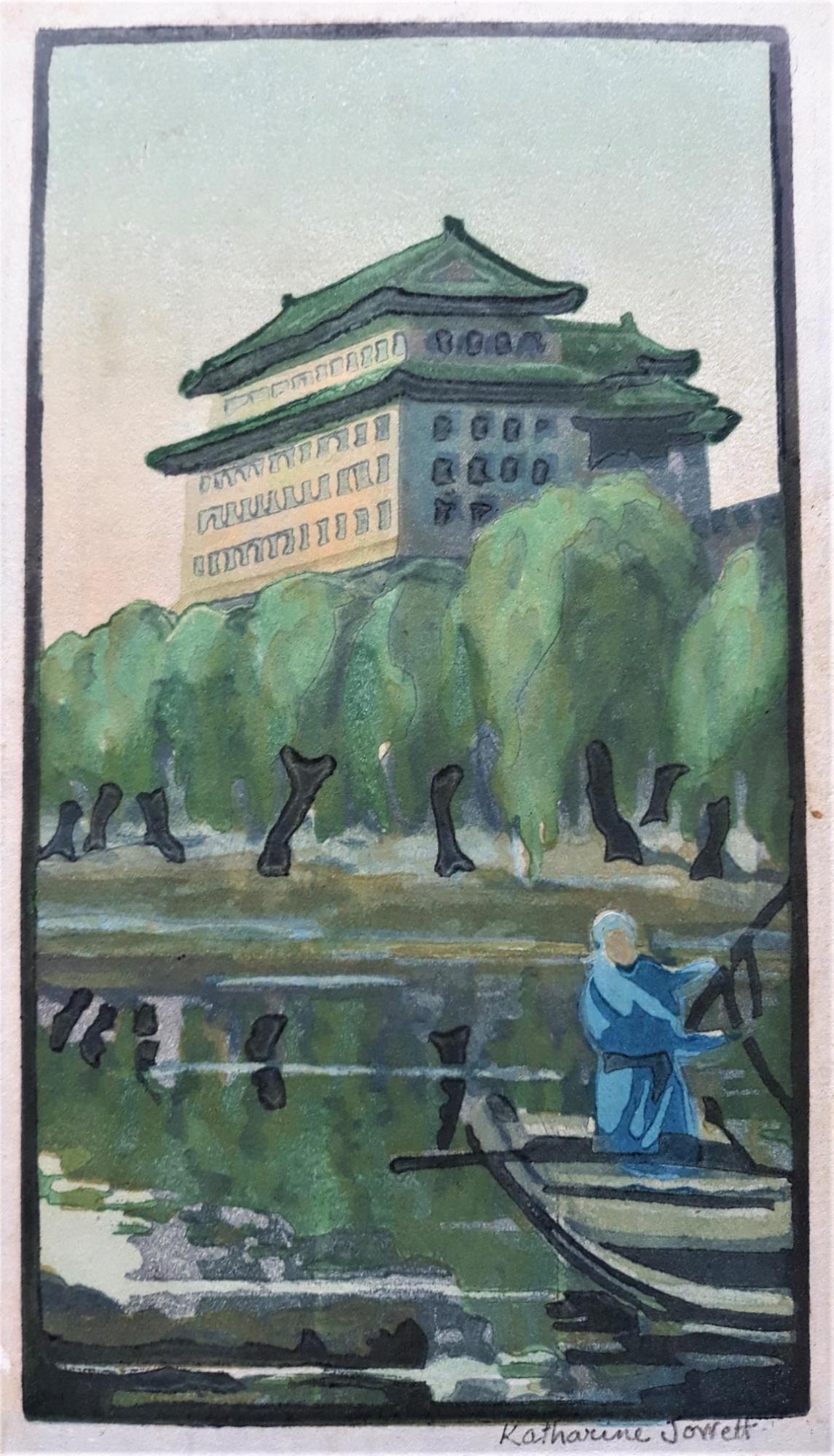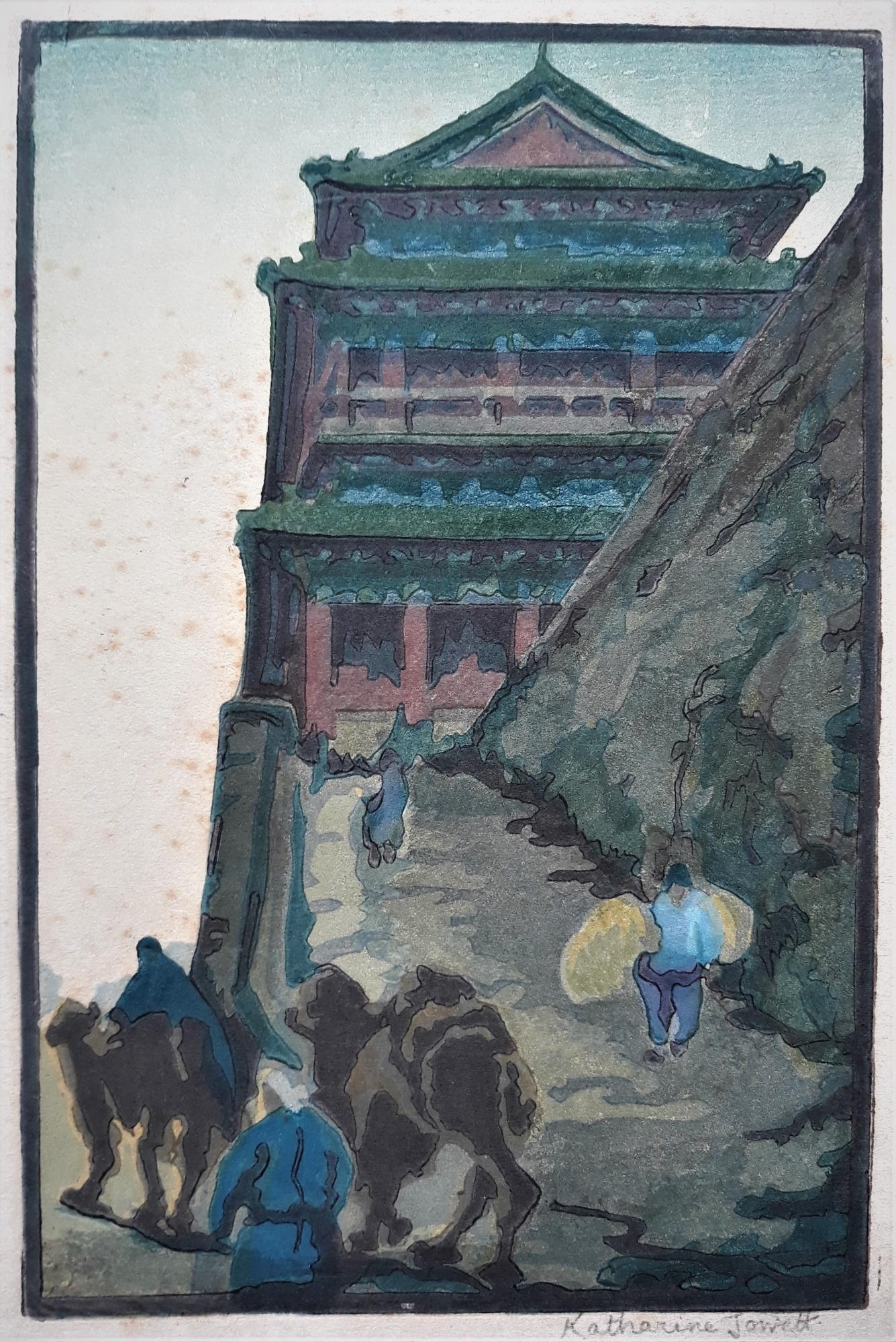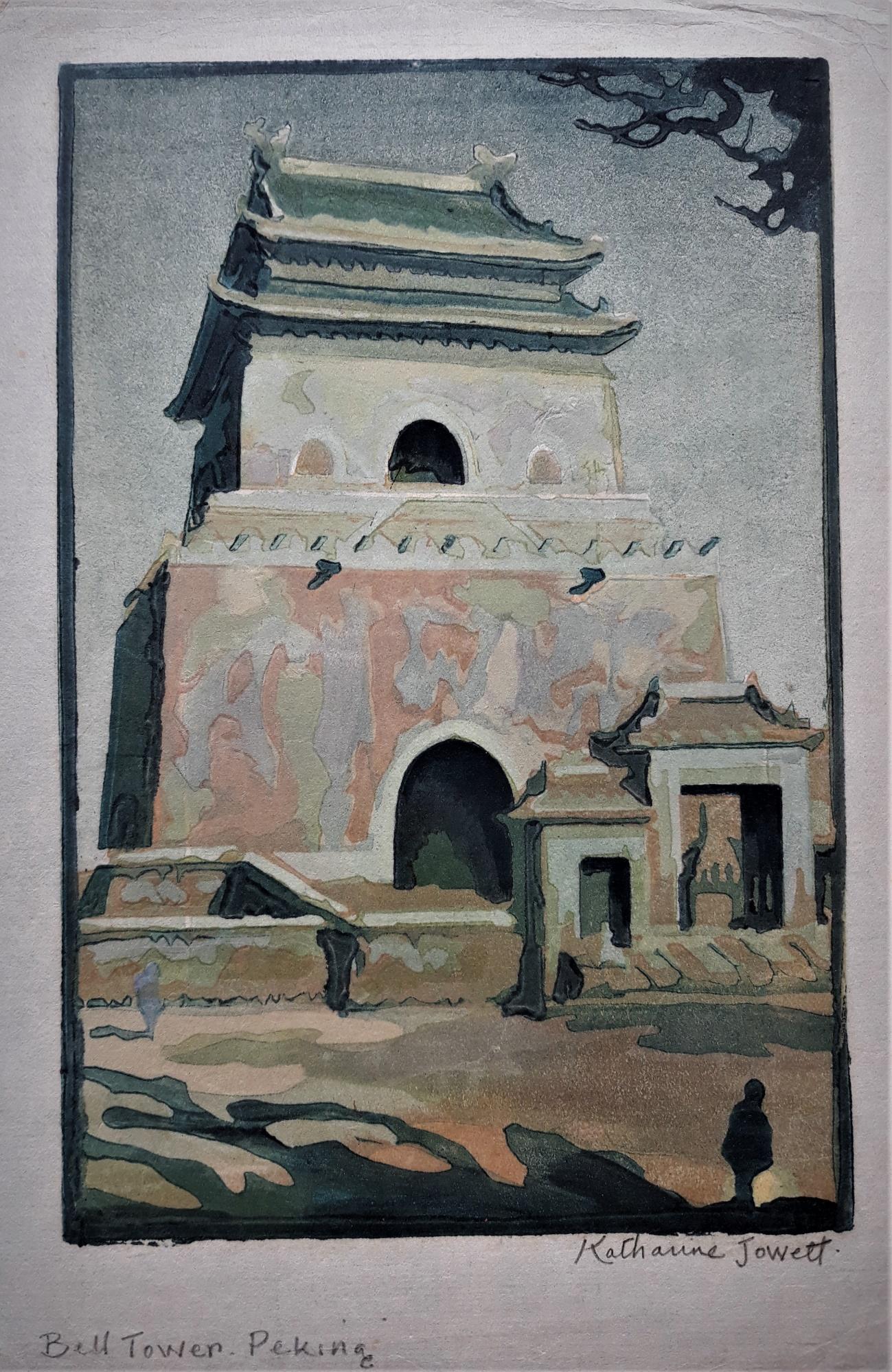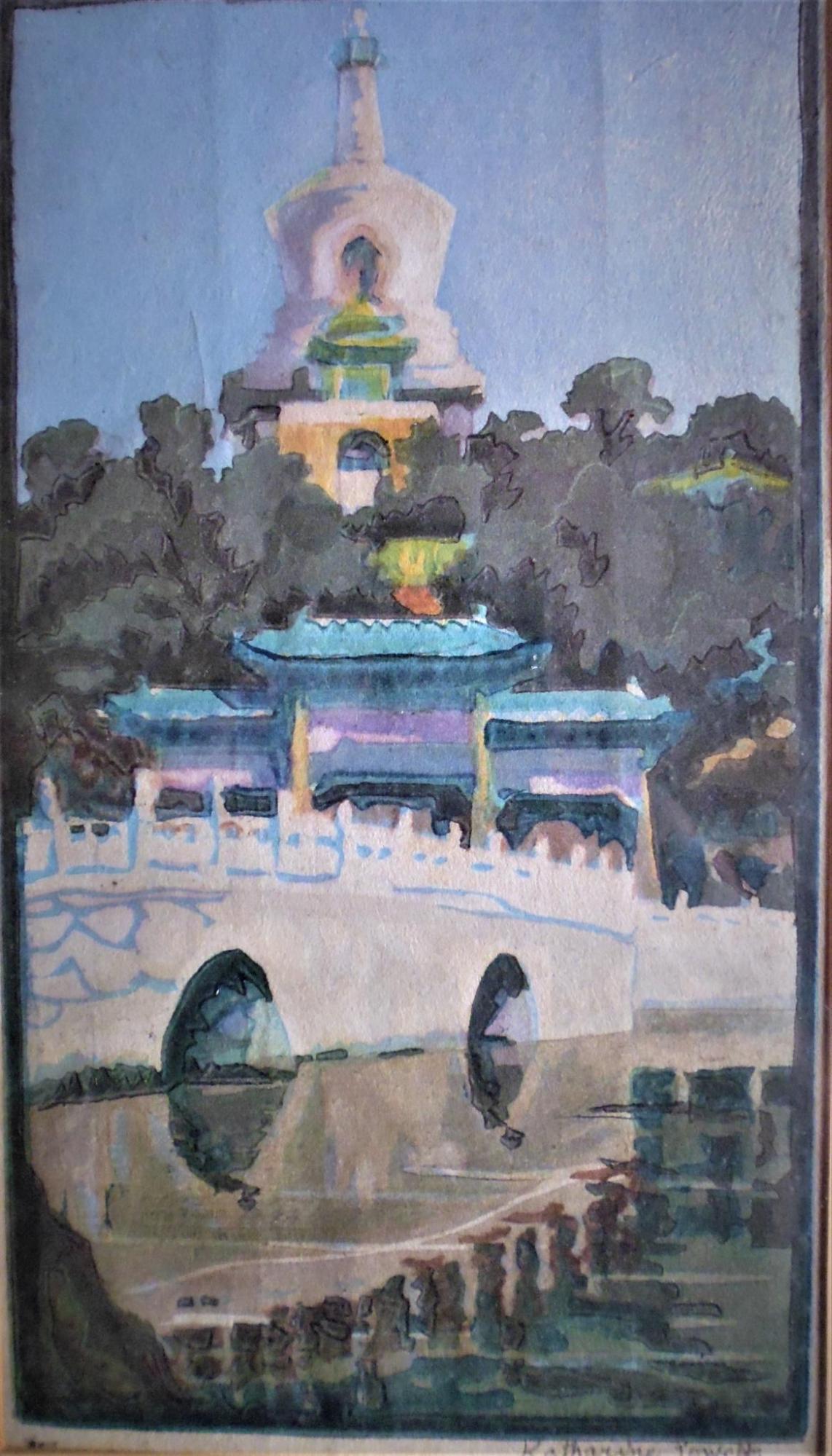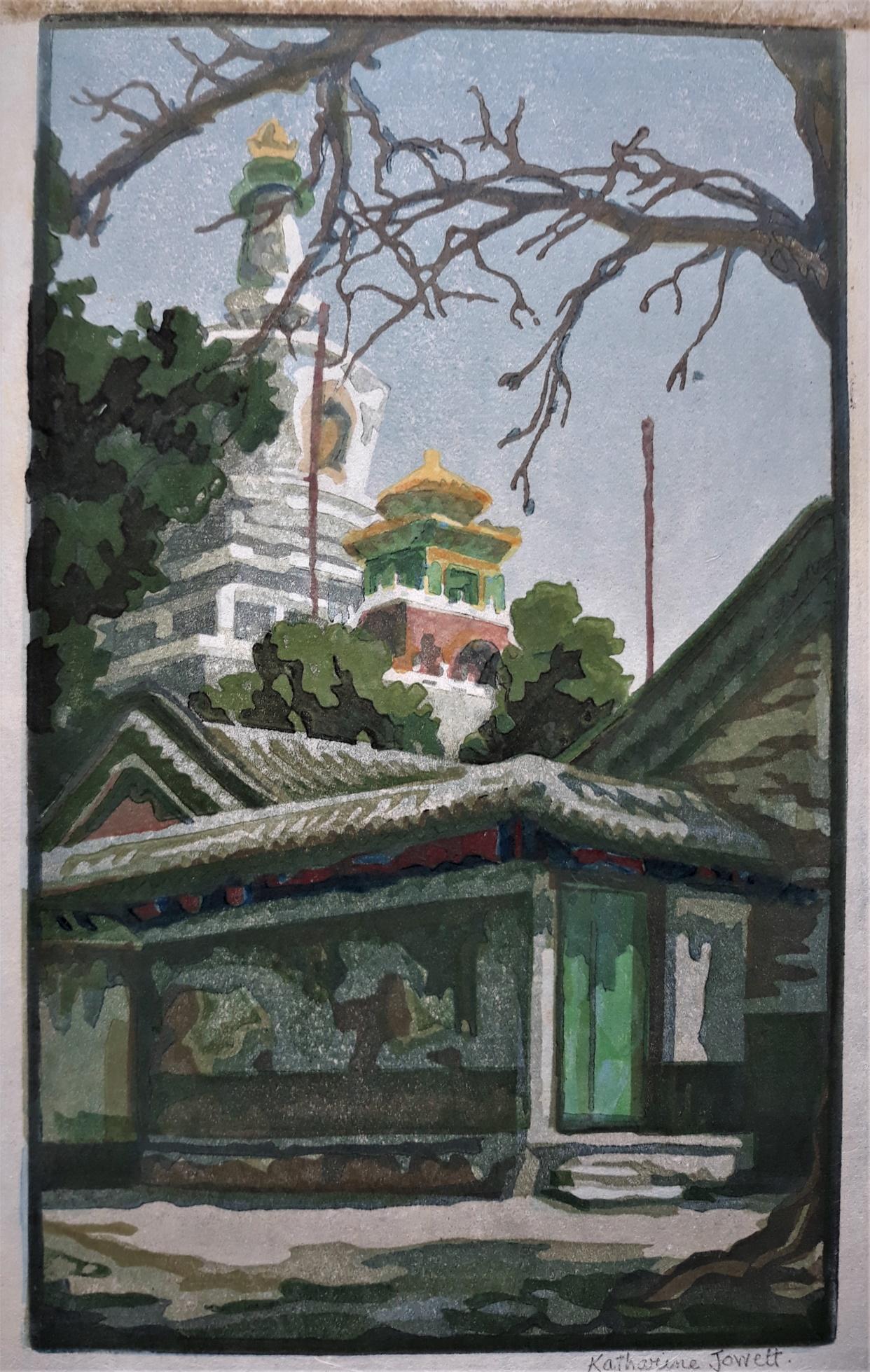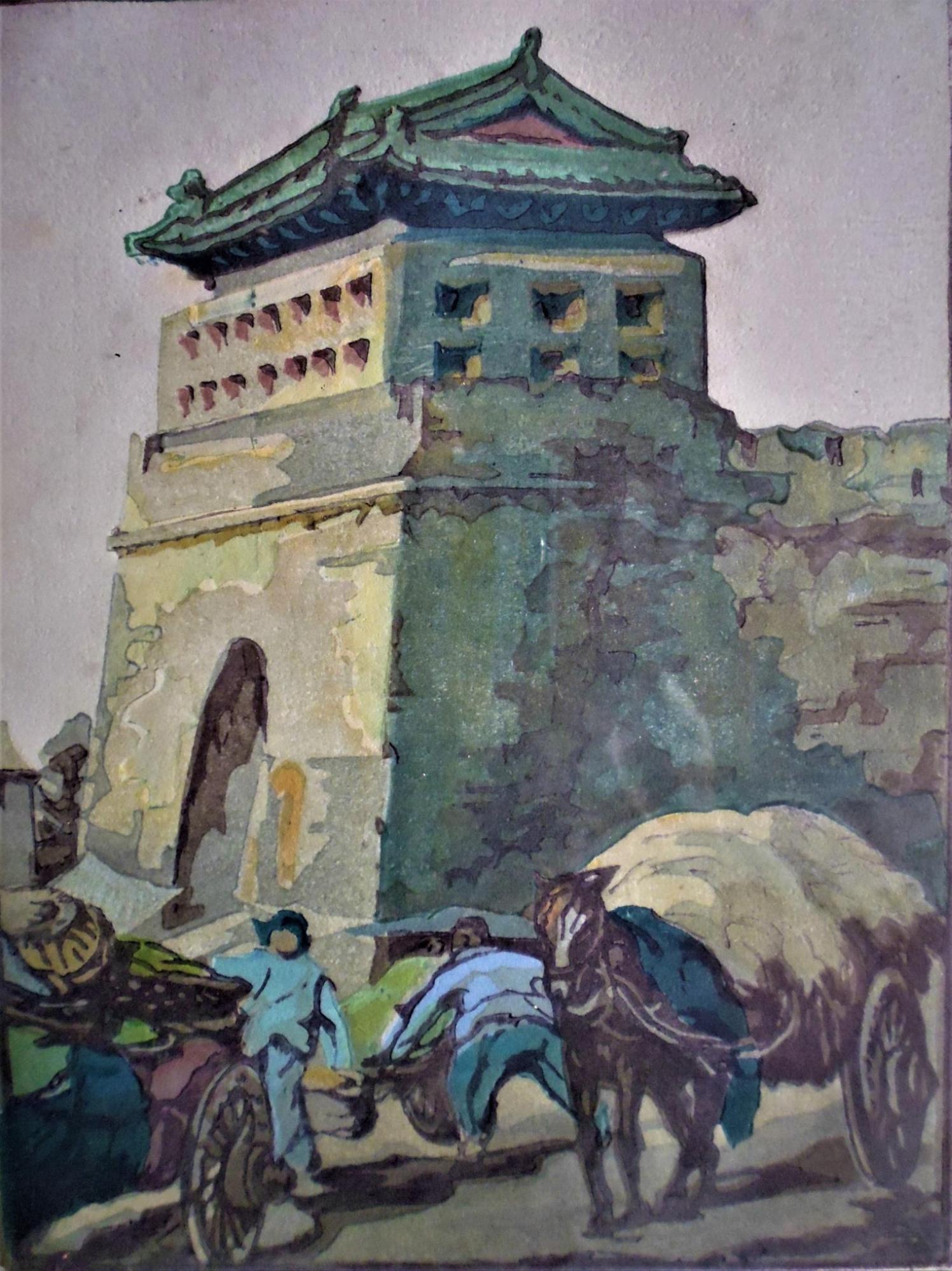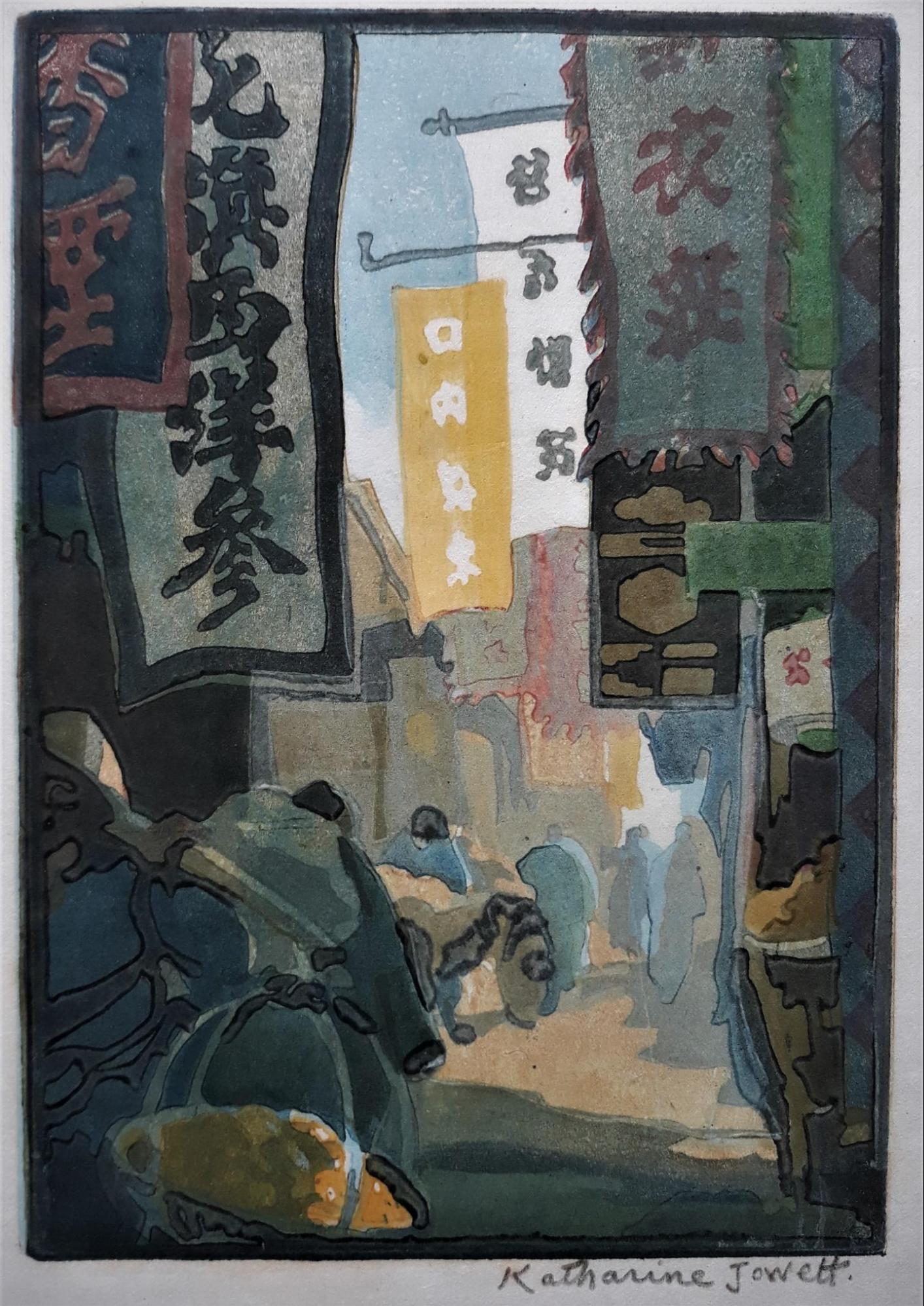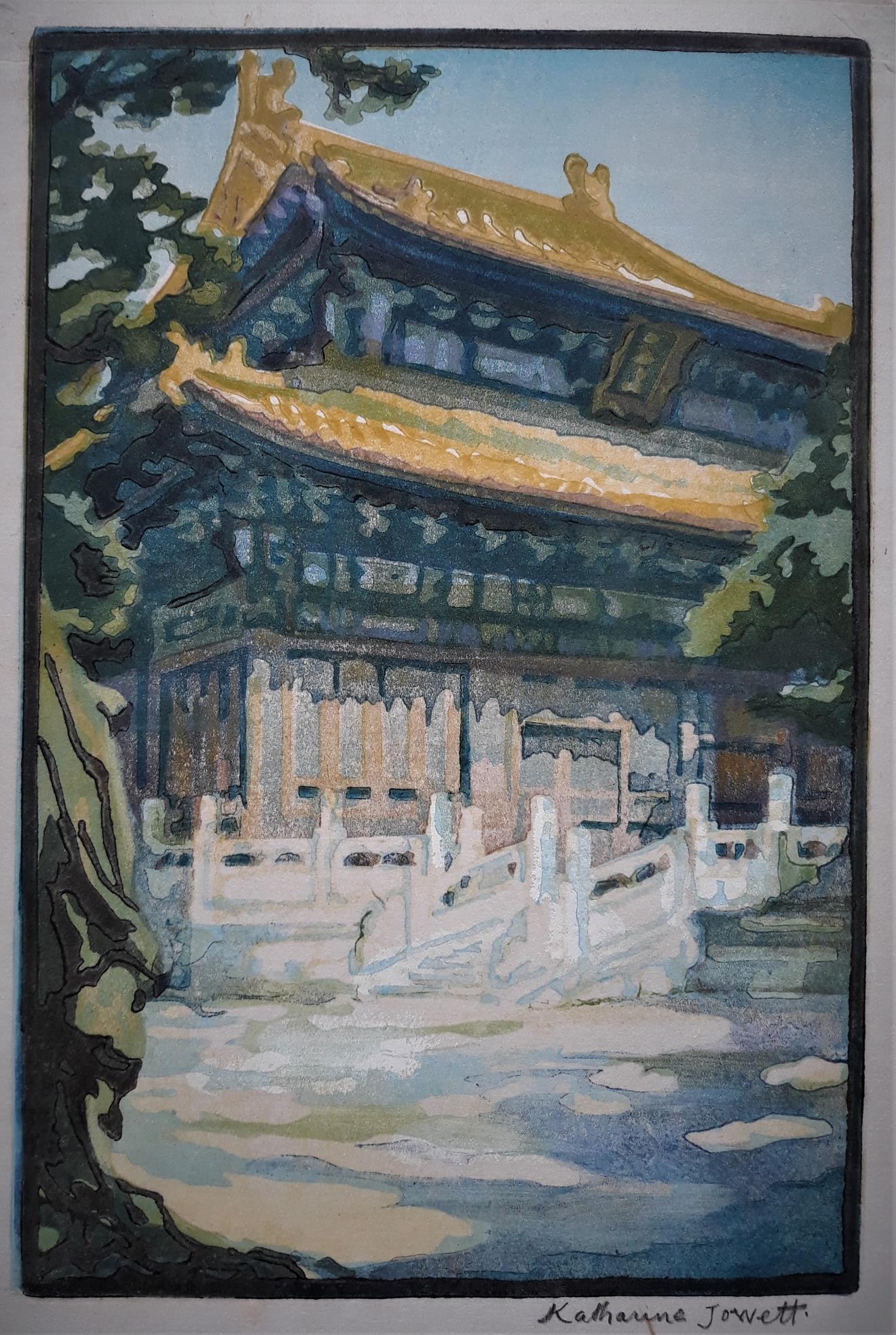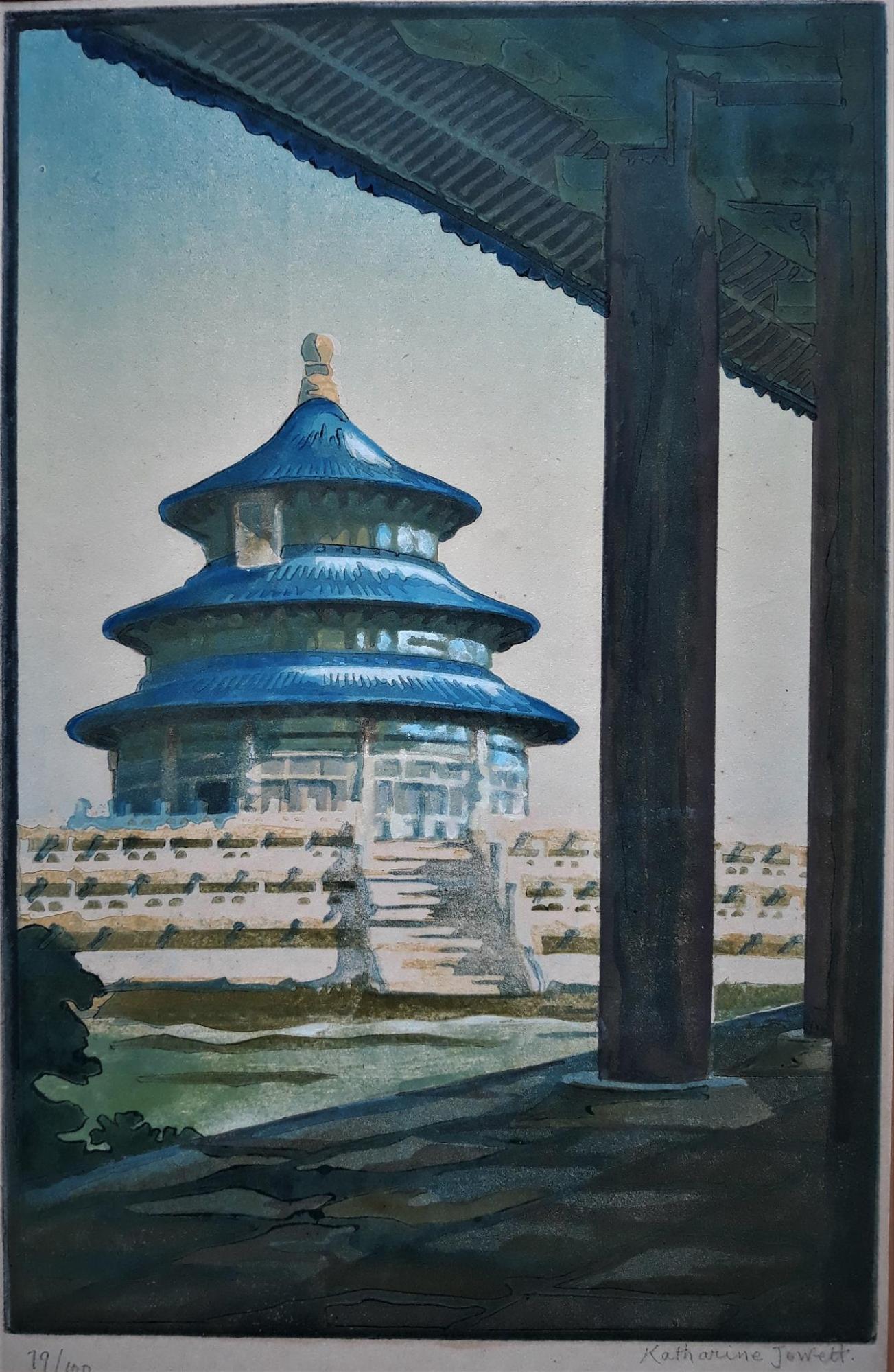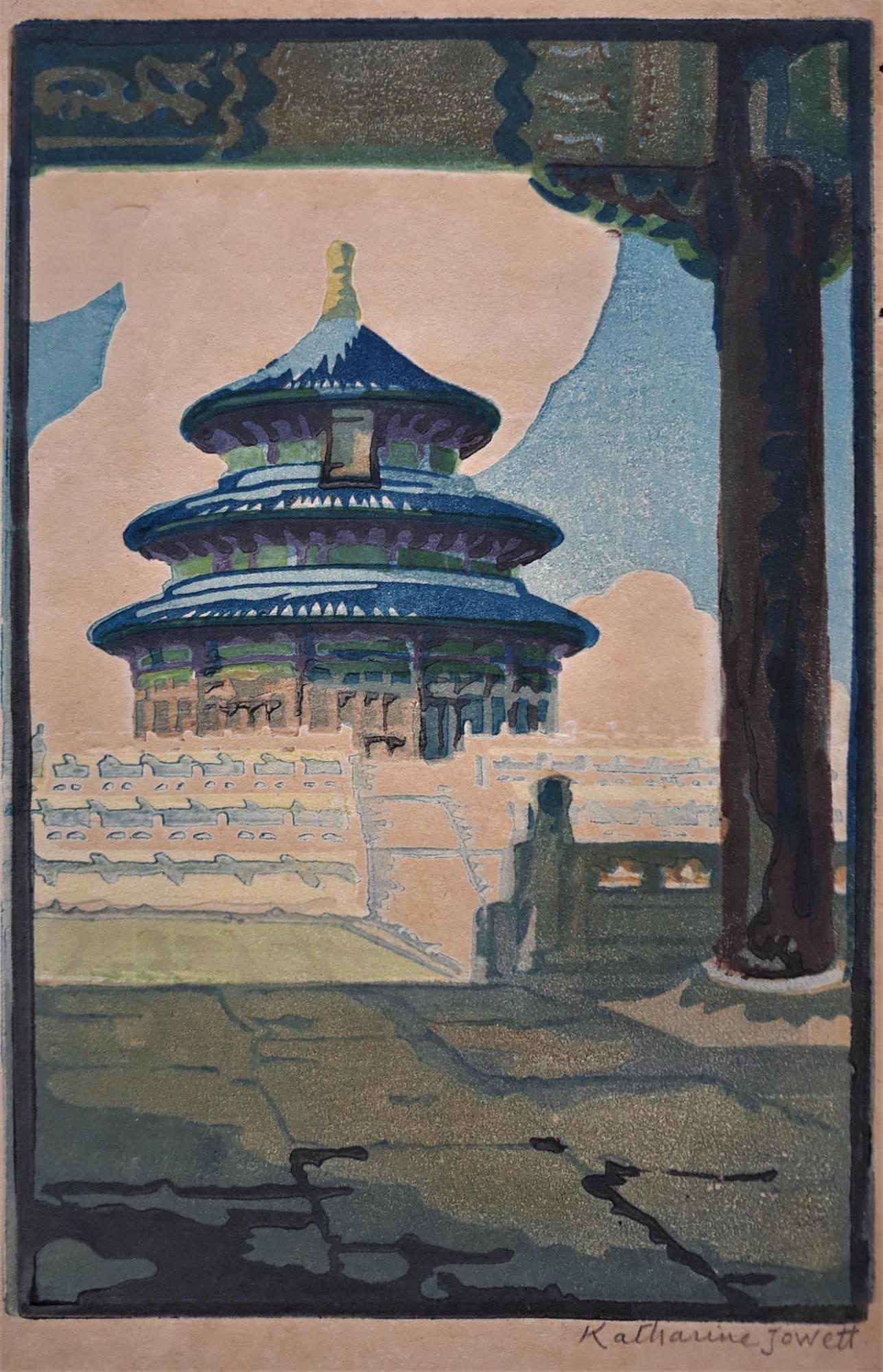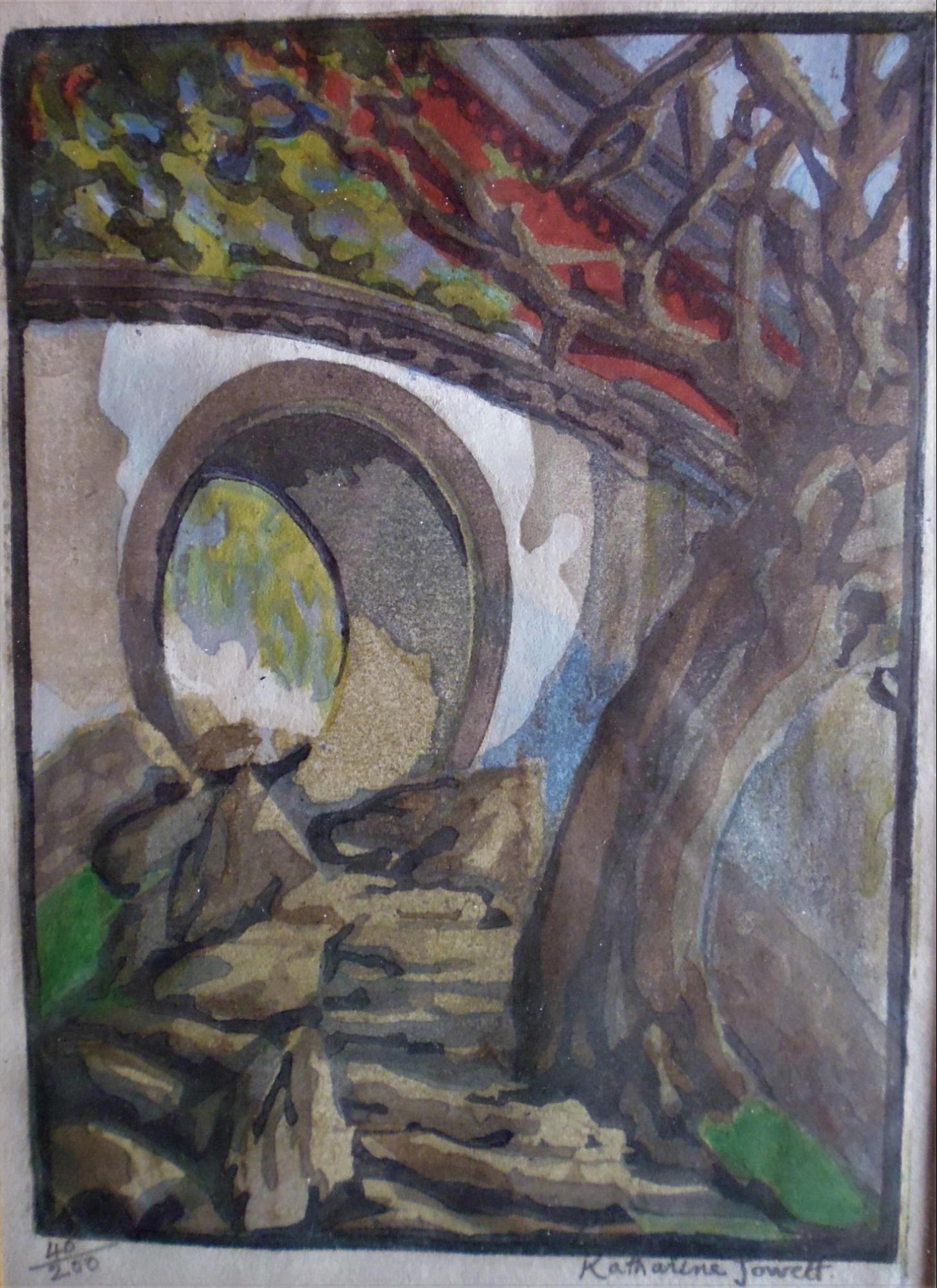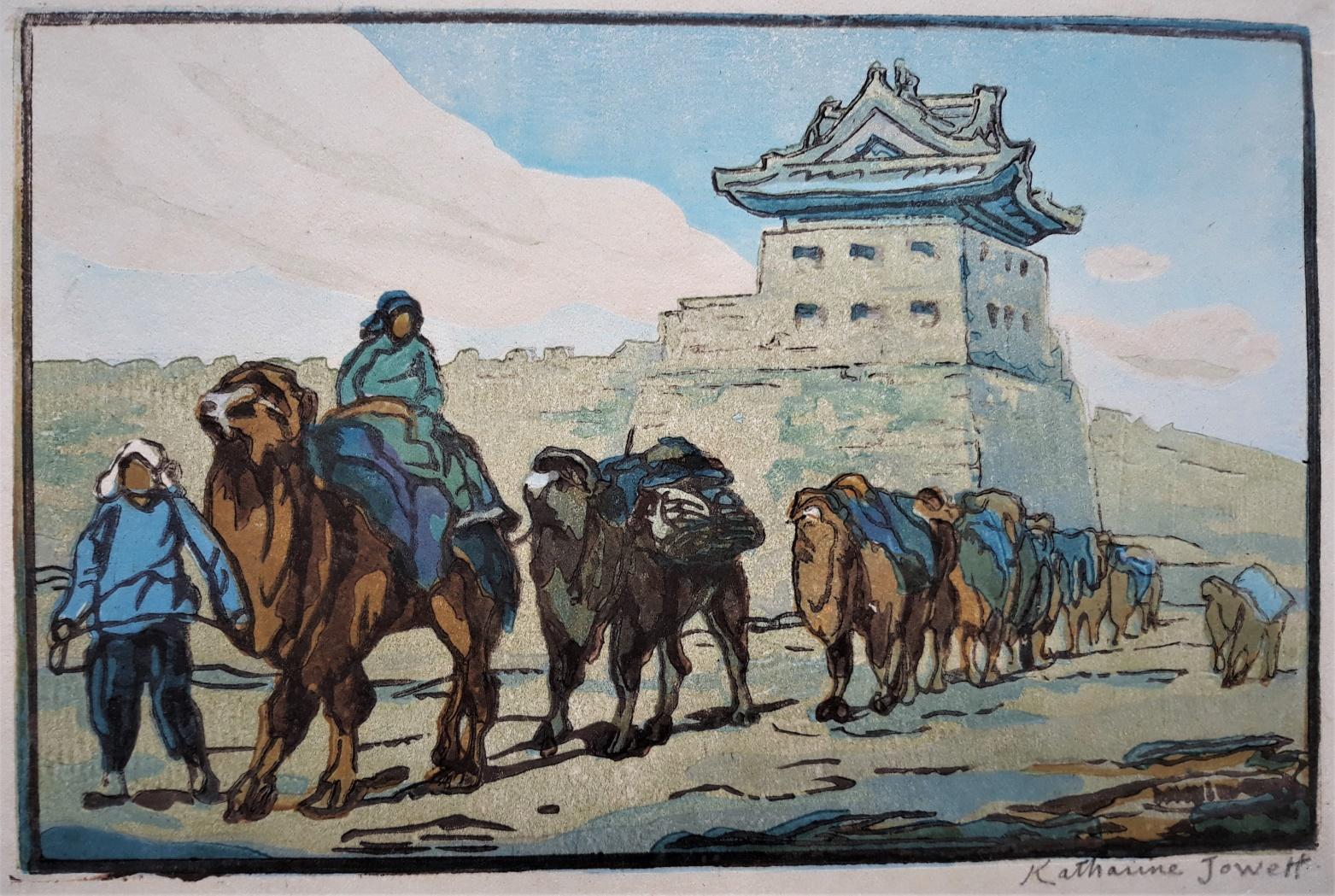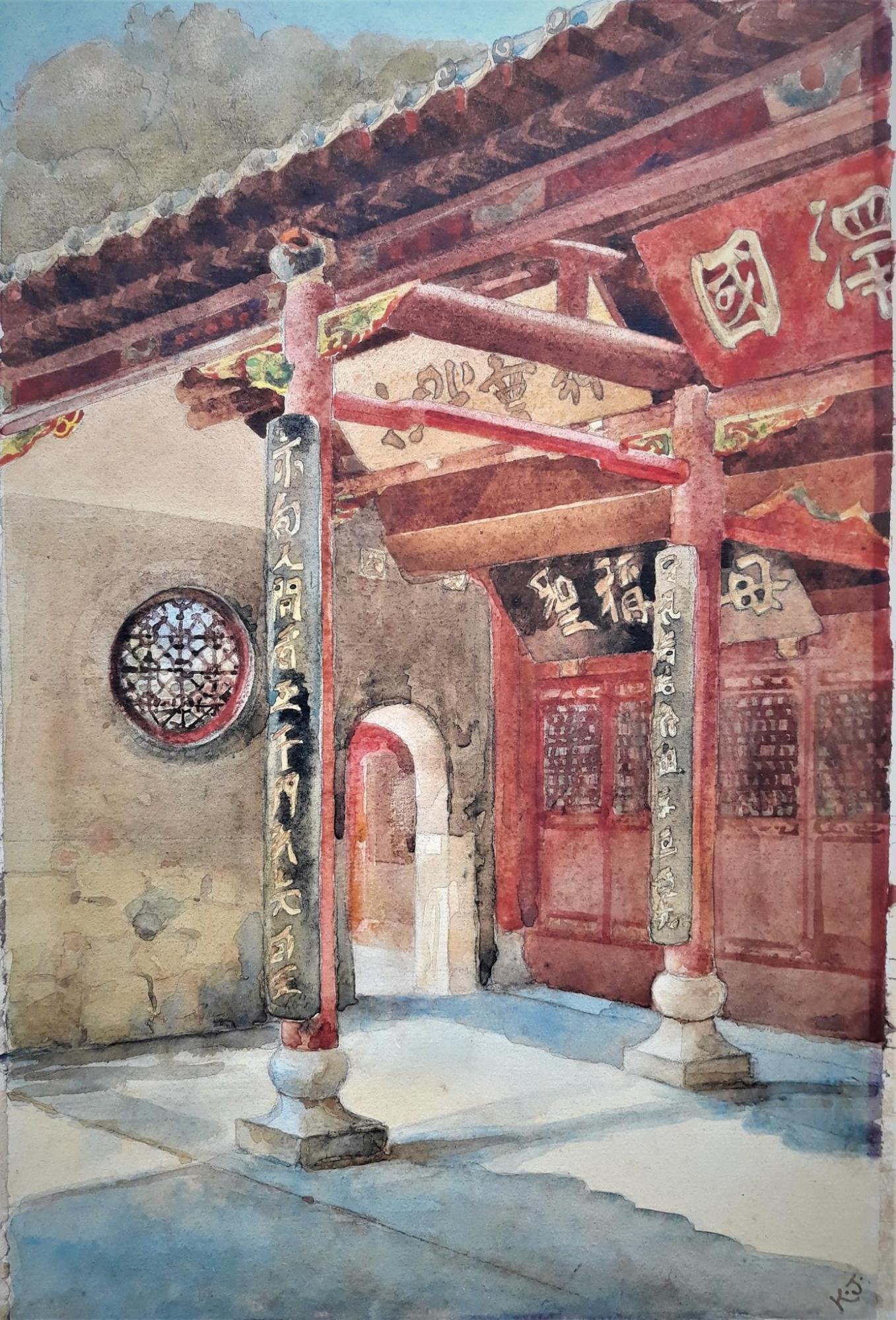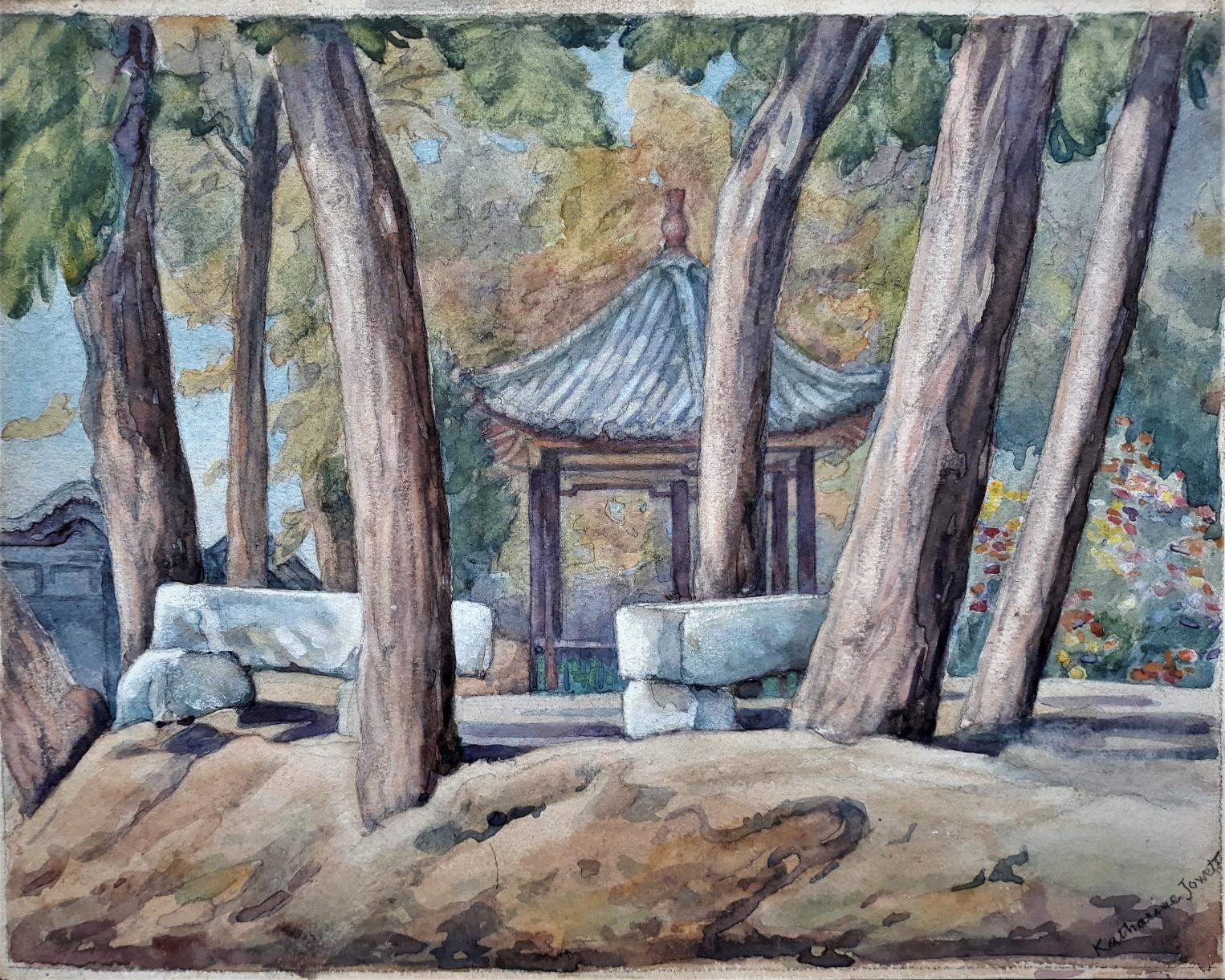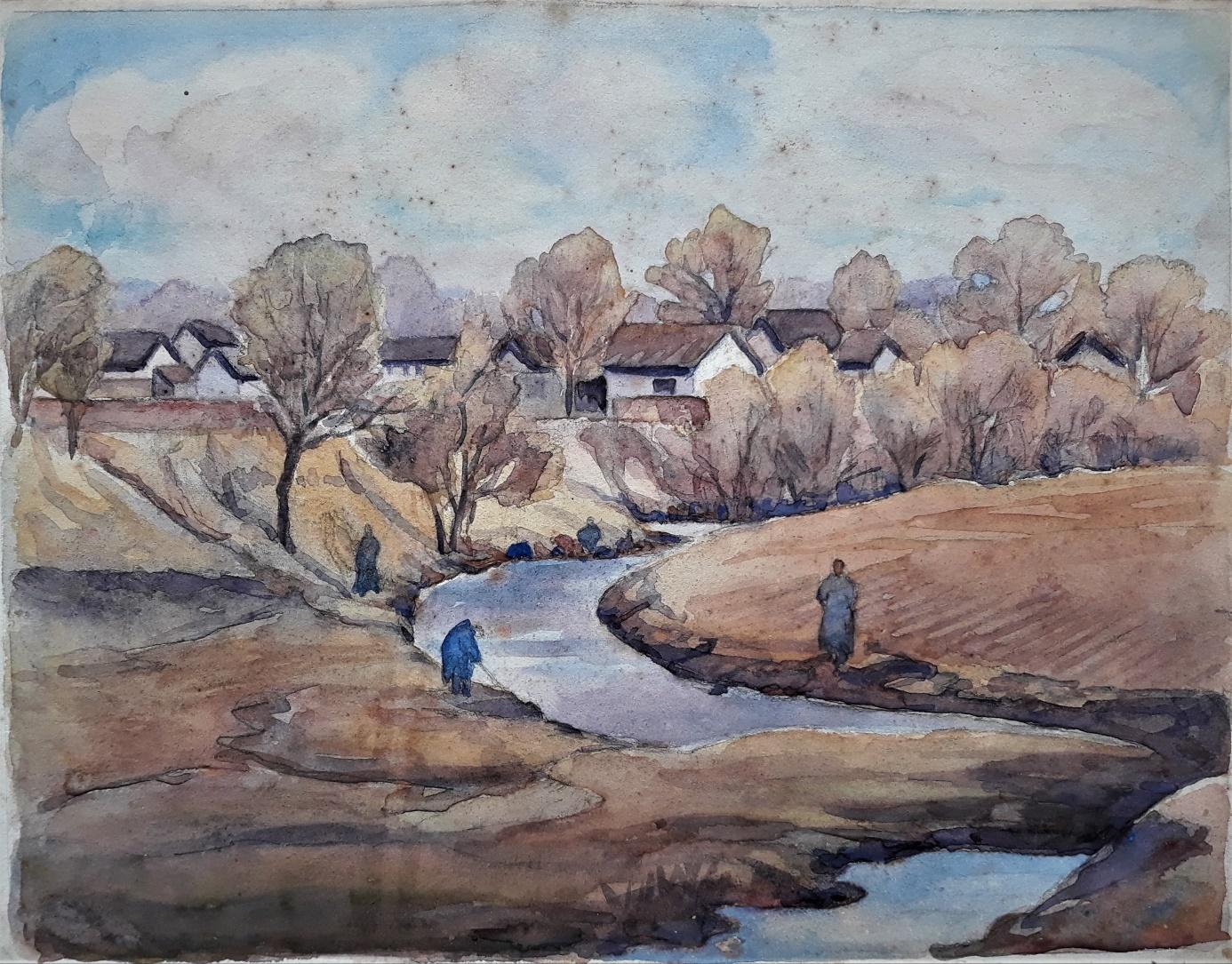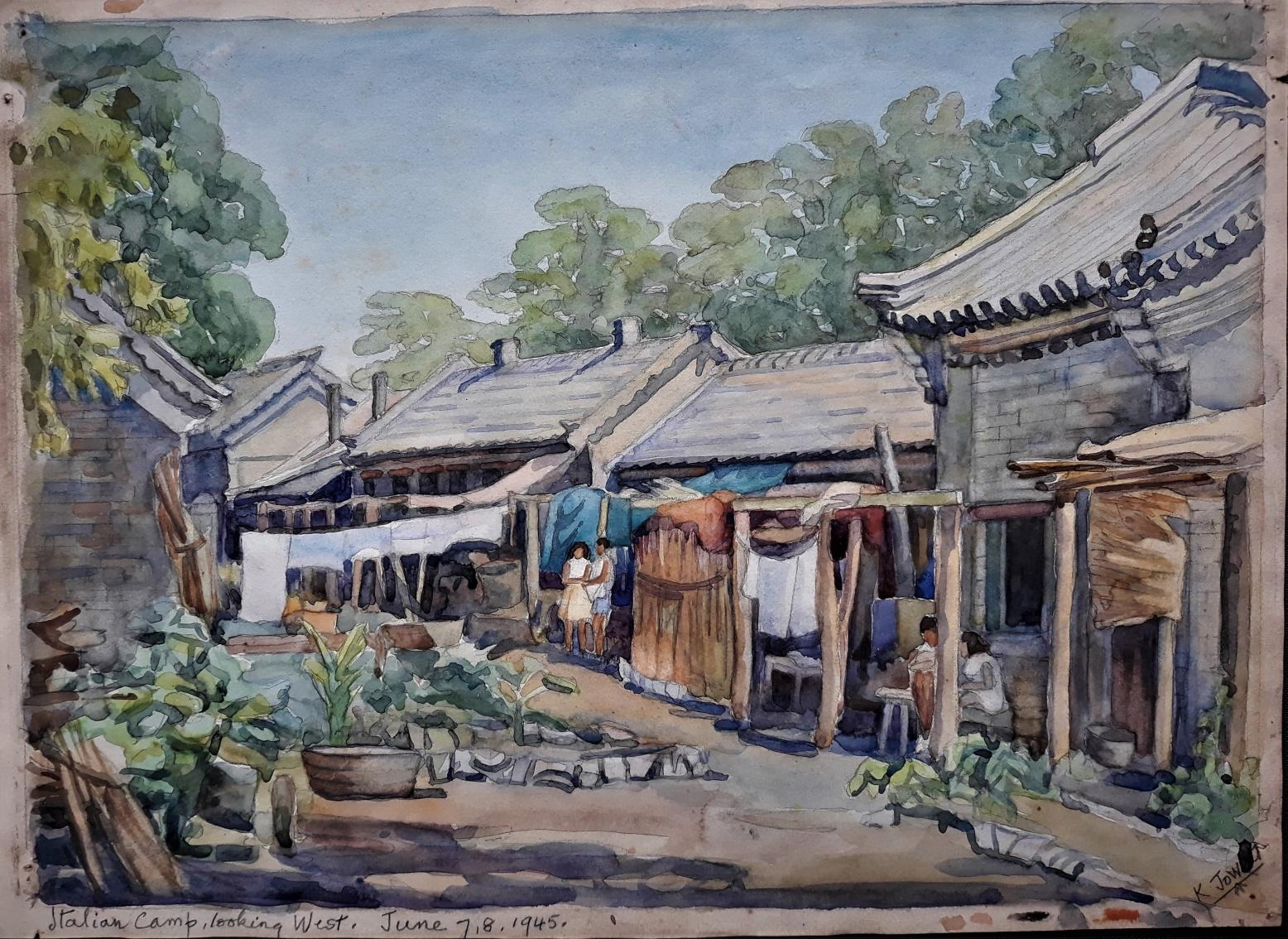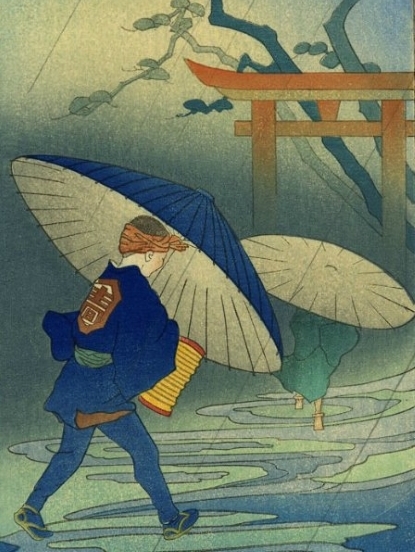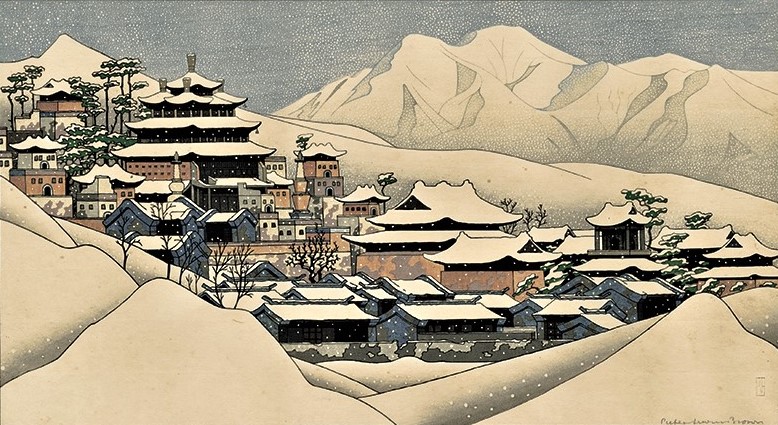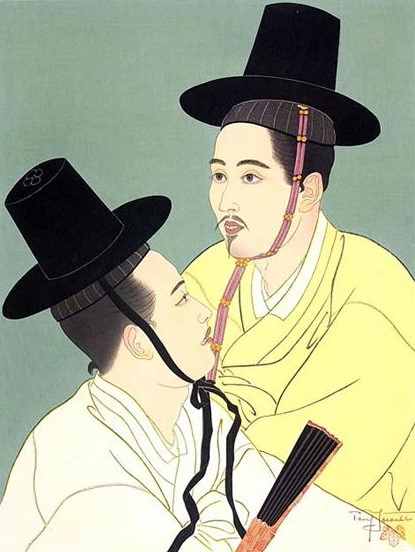KATHARINE JOWETT (1882-1972)
Katharine Jowett is a special case among Far Eastern painters : she appears unpretentious, an artist more for entertainment than by vocation, active for a fairly short period in a life that is nevertheless quite long, dealing with only one subject - Beijing - and follower of the technique of linocut simpler than woodcut. And yet, the fifty or so works that we know of her display a real know-how and a strong originality that rank her unquestionably among the best.
Catherine Alice Wheatley was born in 1882 in England, into a very religious family : her father, Timothy Wheatley, was Reverend in Exeter of the Methodist Church founded in the 18th century by John Wesley. Her mother belonged to the Pearse family, militant Quakers from Sticklepath, a small village in Devon near Okehampton. Nothing is known of her youth except that her family was in London in 1891 where she does not seem to have had any artistic training. In 1904, she left for China with a Methodist missionary with whom she lived for some time but ended up marrying, in 1910 in Hankow (Wuhan), another Methodist, Hardy Jowett. From this union were born two boys that Katharine Jowett (who preferred to take this spelling for her first name) seems to have raised for a time in England until after the First World War, a period when she probably learned about engraving.
Born in 1872 in Bradford, Yorkshire, Hardy Jowett left for China in 1896 to join a mission of the Methodist Church in Changsha then in Hankow (Wuhan). During the First World War, he was a recruiting agent for the body of Chinese workers sent to Europe before serving on the front in France. Back in China, the Jowetts settled first in Wei Hai Wei and then in Beijing where Hardy was appointed director of the Asiatic Petroleum Company. For fifteen years he was an active member of the foreign community in Beijing, particularly with humanitarian organizations, and became a great connoisseur of the Chinese capital as evidenced by the preface he gave in 1927 to the book by Robert W. Swallow, Sidelights on Peking life. One can imagine the influence he may have had on his wife Katharine in the detailed discovery of the Chinese capital.
And in fact she devoted almost all of her work to painting Beijing and more particularly its monuments. If she frequented Bertha Lum, another great figure of the Far Eastern movement who stayed in the Chinese capital during those years and sometimes practiced linocuts, we do not however detect any influences between them. Because, Katharine Jowett has remained resolutely in a personal approach : she seems to paint for her pleasure, without worrying about what is done elsewhere and without wanting to be part of the pictorial currents of the time, even if some believe to see in her style the influence of the Grosvenor School or of Isabel de Bohun Lockyer. The technique of linocut, the choice of oily inks and the use of poor quality paper sometimes give her engravings an impressionist look that is reinforced by the lack of sharpness of the lines of the drawing and the emptiness of the faces of her street characters. Her technique had its weakness – sometimes a dulling of her engravings over time – but had also an immediate advantage: a reduced cost which allowed her to easily sell her prints, always of modest dimensions, both to Chinese amateurs and expatriates. Truth or legend, it is said that Mao Zedong later acquired some of her works…
An unfortunate episode occured during the Second World War: like many expatriates from the Allied countries residing in China, she was interned by the Japanese from 1943 until the end of the war in the sadly famous camp of Weihsien (Weixian) in Shandong. Despite the harsh living conditions in this camp, she had the happiness of bonding intimately with another prisoner and the courage to continue to paint some watercolors. By chance, I was able to acquire a few years ago some of these rare and moving paintings made in Weihsien which are presented for the first time below.
She seems to have limited her work after her husband's death in 1936, but the famous collector Robert O. Muller (1912-2003), who visited her in Beijing in 1940, was lucky enough to buy a number of her prints.
After the war Katharine Jowett returned to her family in Okehampton and continued to paint watercolours of the Devonshire countryside. Died in December 1972, she is buried at Sticklepath in the Quaker cemetery founded by her maternal grandfather Thomas Pearse.
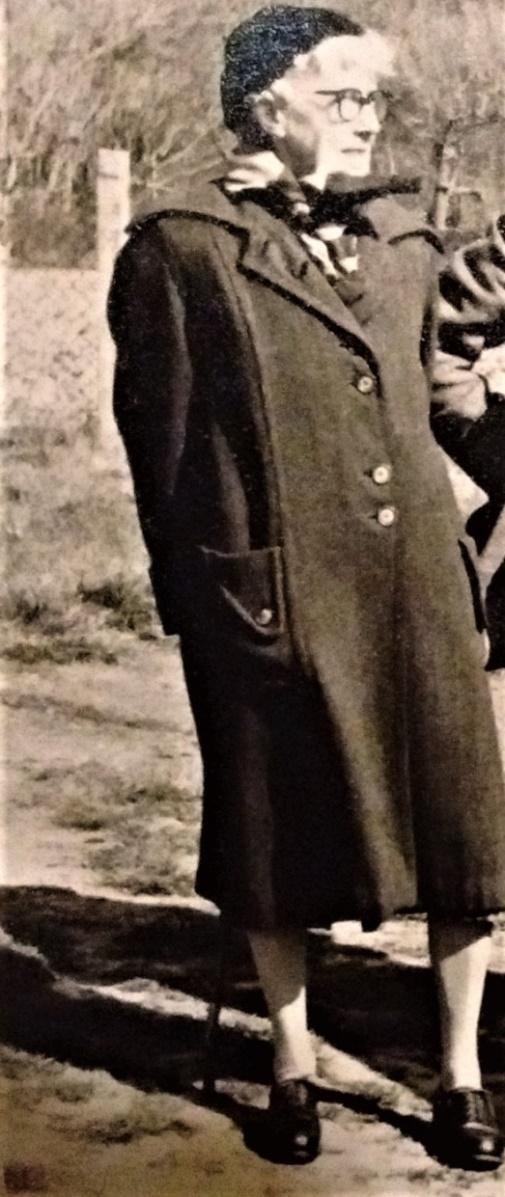
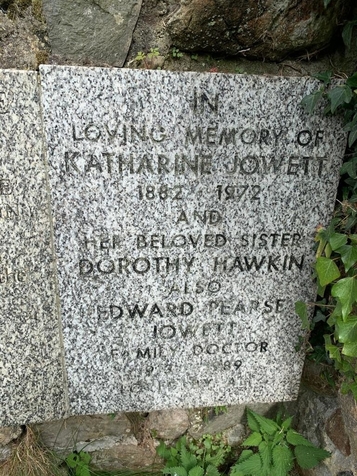
The collection

